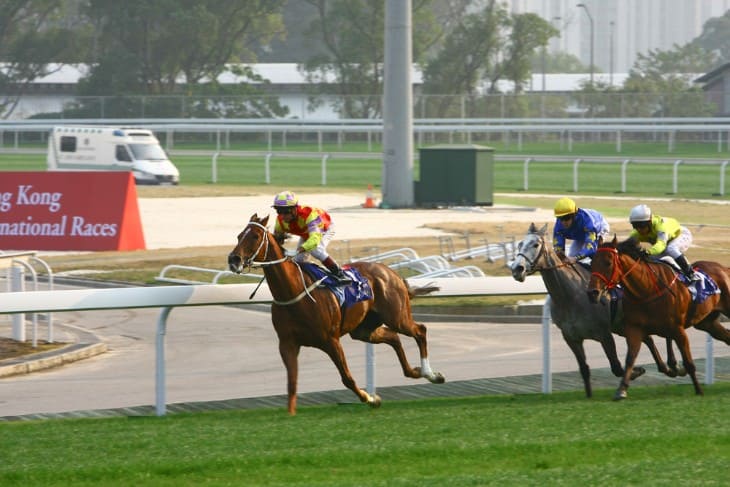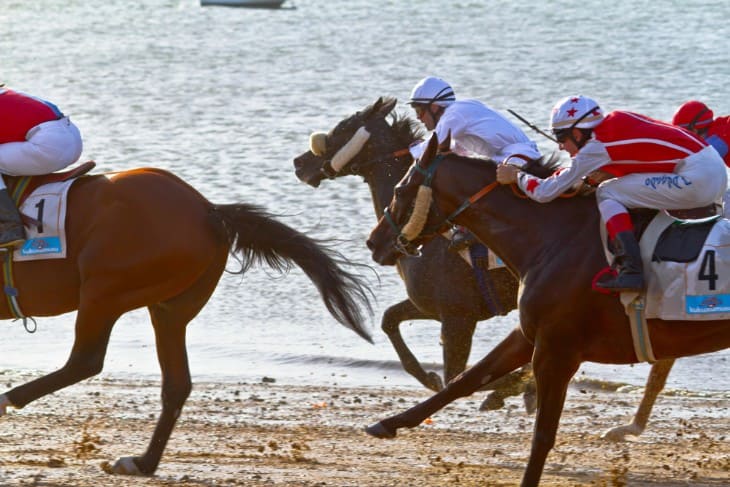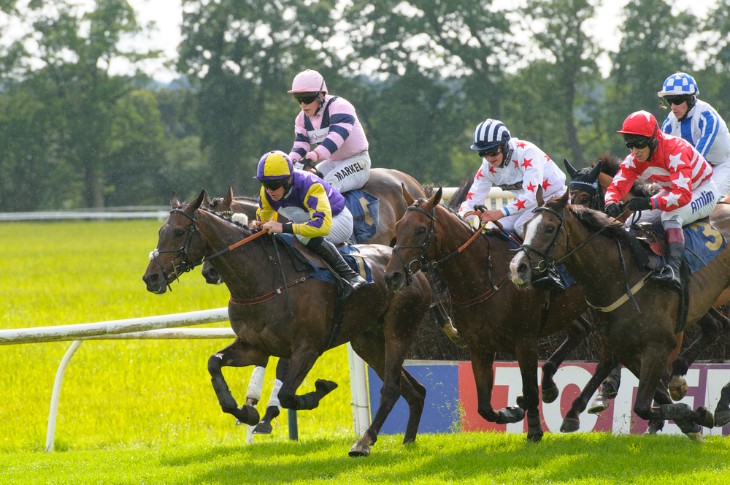- The Harsh Reality Behind the Sport: Quantifying Horse Deaths in Racing
- Historical Trends in Equine Mortality: A Closer Look at the Data
- The Role of Racing Conditions in Equine Fatalities
- Breed-Specific Vulnerabilities and Mortality Rates
- Advances in Veterinary Care and Their Impact on Horse Survival Rates
- The Ethical Implications of Horse Racing on Animal Welfare
- Regulatory Measures and Safety Protocols: Steps Toward Reducing Fatalities
- The Global Perspective: Comparing Mortality Rates Across Countries
- Public Perception and Its Impact on the Racing Industry
- Conclusion:
Horse racing is known for being really glamorous and exciting, but there's a side to it that people don't talk about much; sometimes horses die in this sport. This article looks into how many horses have passed away in horse racing over time. It's a serious issue that makes us think hard about how horses are looked after and the safety rules in horse racing.
By checking out the numbers on horse deaths in racing, we can start to understand why these sad events happen and what causes them. This can help us talk about what needs to be done to keep these beautiful animals safe.
The Harsh Reality Behind the Sport: Quantifying Horse Deaths in Racing
Horse racing is often seen as a fancy and exciting sport, but there's a side to it that doesn't get talked about much - horses dying during races. It's a sad reality that needs more attention. Knowing how big this problem is can help us make the sport better and safer for the horses.
Every year, some horses die on racecourses for different reasons, like getting hurt during a race, health problems, or accidents. The number of horses that die can change each year and in different places, but every single one matters because it's a life that's been lost.
People have been trying to figure out how many horses die by looking at various races and tracks to understand what's going on. What they find is often upsetting. For example, some studies say that hundreds of horses might die every year around the world because of racing. These aren't just numbers; they show the risks and losses in a sport that lots of people love.
This problem is bigger than just how the sport looks to people; it's about taking good care of the animals that take part. Every time a horse dies, it makes people ask if the safety measures are good enough, if the tracks are safe, and if the horses are being looked after properly. It makes everyone involved in horse racing think about how they can make the sport safer for the horses.
Historical Trends in Equine Mortality: A Closer Look at the Data
Taking a closer look at the historical data on equine mortality in horse racing reveals some notable trends:
- Fluctuations Over Time: Over the years, the number of horse deaths in racing has seen ups and downs. Some periods show a higher rate of fatalities, often linked to specific issues in the industry at the time.
- Impact of Safety Measures: As new safety measures and regulations have been introduced, there's been a noticeable impact on mortality rates. Improvements in track conditions, veterinary care, and training practices have contributed to periods of decline in fatalities.
- Breed-Specific Trends: Certain breeds, like Thoroughbreds, have shown different trends in mortality rates compared to others. This is often related to the specific demands of the races they participate in.
Historically, the data on horse deaths in racing has varied over time. There have been periods where the number of fatalities was notably high, raising concerns and prompting changes within the industry. These changes, including enhanced safety protocols and better veterinary care, have often led to a subsequent decrease in the number of deaths.
The type of horse breed involved in racing also influences mortality trends. For example, Thoroughbreds, commonly used in flat racing, have historically had different mortality rates compared to breeds used in other types of racing. This is due to the unique physical and racing demands placed on each breed.

The Role of Racing Conditions in Equine Fatalities
The safety and happiness of horses in racing really depend on the conditions they race in. These conditions can change how likely accidents and serious injuries are. Knowing about these conditions helps us look after the horses better and keep them safe.
First off, what the race track is made of matters a lot. Tracks can be grass, dirt, or a synthetic mix, and each type affects horses differently. For example, some tracks might be tougher on a horse's legs, which could lead to more injuries.
The weather's impact is big too. Really hot days can make horses overheat or get dehydrated, and lots of rain can make the track slippery, making it easier for horses to fall.
How well the track is looked after is super important as well. Tracks have to be in good shape, which means people need to check them and fix any problems regularly. A track that's not taken care of properly can be uneven or have hidden dangers that can cause accidents.
The length of the race and how fit the horse is also play a part. Longer races are harder, and if a horse hasn't been trained properly, it's more likely to get hurt. How fit a horse is and how it's been trained can make a big difference in how well it does in a race.
Breed-Specific Vulnerabilities and Mortality Rates
Breed-Specific Vulnerabilities
Different horse breeds have different characteristics and have distinct physical traits, which may lead to varying vulnerabilities in horse racing. Taking example of Thorughbreds, they are well known for their speed and agility in flat racing. However, leg injuries are common among them because of their lighter bone structure. Their high-speed races often put significant stress on their legs, increasing the risk of fractures.
In contrast, Standardbreds, usually seen in harness racing, have a sturdier build. They are less prone to leg injuries compared to Thoroughbreds but may face different health challenges. Similarly, Quarter Horses, known for their explosive speed in short-distance races, can experience issues related to their intense bursts of speed.
Mortality Rates by Breed
The mortality rates in horse racing can vary significantly between breeds. Thoroughbreds tend to have a higher rate of fatalities, largely due to the nature of flat racing, which involves high speeds and longer distances. This puts a lot of strain on their bodies, leading to a higher incidence of accidents and injuries.
A lower mortality rate exists in breeds like Standardbreds and Quarter Horses in racing formats. This is partly due to the different racing styles and the physical demands of each type of race. Harness racing, for from example, involves a different gait and typically lower speeds than flat racing, which can result in fewer high-impact injuries.
Advances in Veterinary Care and Their Impact on Horse Survival Rates
Veterinary care in horse racing has seen significant advancements, positively impacting horse survival rates. These include:
- Improved Diagnostics: The use of advanced imaging technologies, like MRI and CT scans, has allowed for earlier and more accurate diagnosis of injuries.
- Better Treatment Options: Advances in surgical techniques and pain management have improved the treatment of injuries. There's also more focus on rehabilitation, helping horses recover more effectively.
- Enhanced On-Track Medical Support: Immediate medical care during races has improved with vets and medical teams present on-site. This quick response can be crucial in preventing minor injuries from becoming serious.
The introduction of advanced imaging technologies has been a game-changer in veterinary care within horse racing. MRI and CT scans enable early detection of potential problems, often before they become serious. This early intervention can prevent injuries that might otherwise have led to fatalities.
The Ethical Implications of Horse Racing on Animal Welfare
Talking about horse racing often brings up questions about whether it's fair to the horses. The most important thing in this debate is how the horses are looked after. Here's what that involves.
Firstly, the well-being of the horses is really important. They're asked to run really hard in races, which can be tough on them. They can get hurt, sometimes badly or even in ways that could lead to them dying. This makes people wonder if it's right to make horses race just for people to enjoy watching and betting on them.
Then there's how the horses are treated when they're not racing. This includes where they live, the kind of care they get, and what happens to them when they can't race anymore. Some horses don't have a nice place to go if they're not racing, which is something else people worry about.
The way some horses are given medicines or drugs to make them run faster or better is another big issue. It's okay to give them medicine if they're sick, but using drugs to make them do better in races can be bad for their health and makes the races less fair.
Finally, people are also talking about how horses are bred for racing. Everyone wants horses that are super fast and strong, but focusing on these things too much can cause health problems for the horses and make it so there's not much variety in their genes. This focus on making the perfect racing horse raises questions about whether it's fair to the horses in the long run.

Regulatory Measures and Safety Protocols: Steps Toward Reducing Fatalities
After a lot of worry about horses getting hurt or dying in races, there have been some new rules and safety steps taken to make racing safer for the horses and cut down on accidents.
A big change has been stricter rules about drugs. Now, there are tougher laws on what medications horses can have and a total no-go on drugs that make them run unnaturally fast or push them too hard. This makes sure horses aren't being harmed to perform better.
Horses now also have to take breaks between races. These breaks are a must, giving horses time to rest up and recover before they race again. Resting is key to keeping them healthy and stops them from getting hurt because they're racing too much.
Looking after the race tracks has been stepped up, too. The tracks are checked often to make sure they're safe and in good shape, reducing the chances of accidents. This includes making sure the track surface is okay and there's nothing on the track that could trip up a horse.
And when there are races, there are vets ready to step in right away if a horse gets injured. Having vets there means they can quickly take care of any injuries, which can really help stop minor injuries from getting worse.
The Global Perspective: Comparing Mortality Rates Across Countries
When examining horse racing globally, differences in mortality rates across countries are evident. These variations can be attributed to several factors:
- Regulatory Standards: Some countries have stricter regulations regarding horse racing, which can lead to lower mortality rates.
- Racing Practices: The types of races and the racing culture vary, influencing the risks involved.
- Veterinary Care: The level and availability of veterinary care differ, impacting the survival rates of injured horses.
Countries with stringent regulatory standards typically see fewer horse deaths. These regulations often cover aspects like track safety, horse welfare policies, and mandatory rest periods for horses. Such measures ensure a safer racing environment, reducing the likelihood of fatal accidents.
Public Perception and Its Impact on the Racing Industry
How people see horse racing really matters for the future of the sport. The more people learn about the dangers horses face, like getting hurt or even dying, the more they start to worry. Folks are asking if racing is really okay for the horses.
If people feel bad about how horses are treated, they might stop going to races or betting on them. This can make things tough for the racing world because it needs money to keep going. It's a clear message that the sport has to take these worries seriously.
Social media means news about horses getting injured or passing away gets around fast, making even more people think about these issues. This can lead to lots of people wanting things to change in horse racing.
How the racing world reacts to these concerns is really important. They've begun to make things safer for the horses and are trying to show everyone what they're doing to help. Making the sport safer and being open about it can make people feel better about horse racing.
Conclusion:
In conclusion, the analysis of historical data on horse deaths in racing brings to light the urgent need for action and responsibility within the industry. While progress has been made, there is still a long way to go in ensuring the safety and welfare of these magnificent animals.
By continuing to ask, "How many horses have died in horse racing?" we keep the focus on this critical issue, driving further research, discussion, and improvement. The future of horse racing hinges on its ability to evolve into a sport where the health and well-being of every horse are placed at the forefront, ensuring that the sport's legacy is as humane as it is historic.
For more information:








